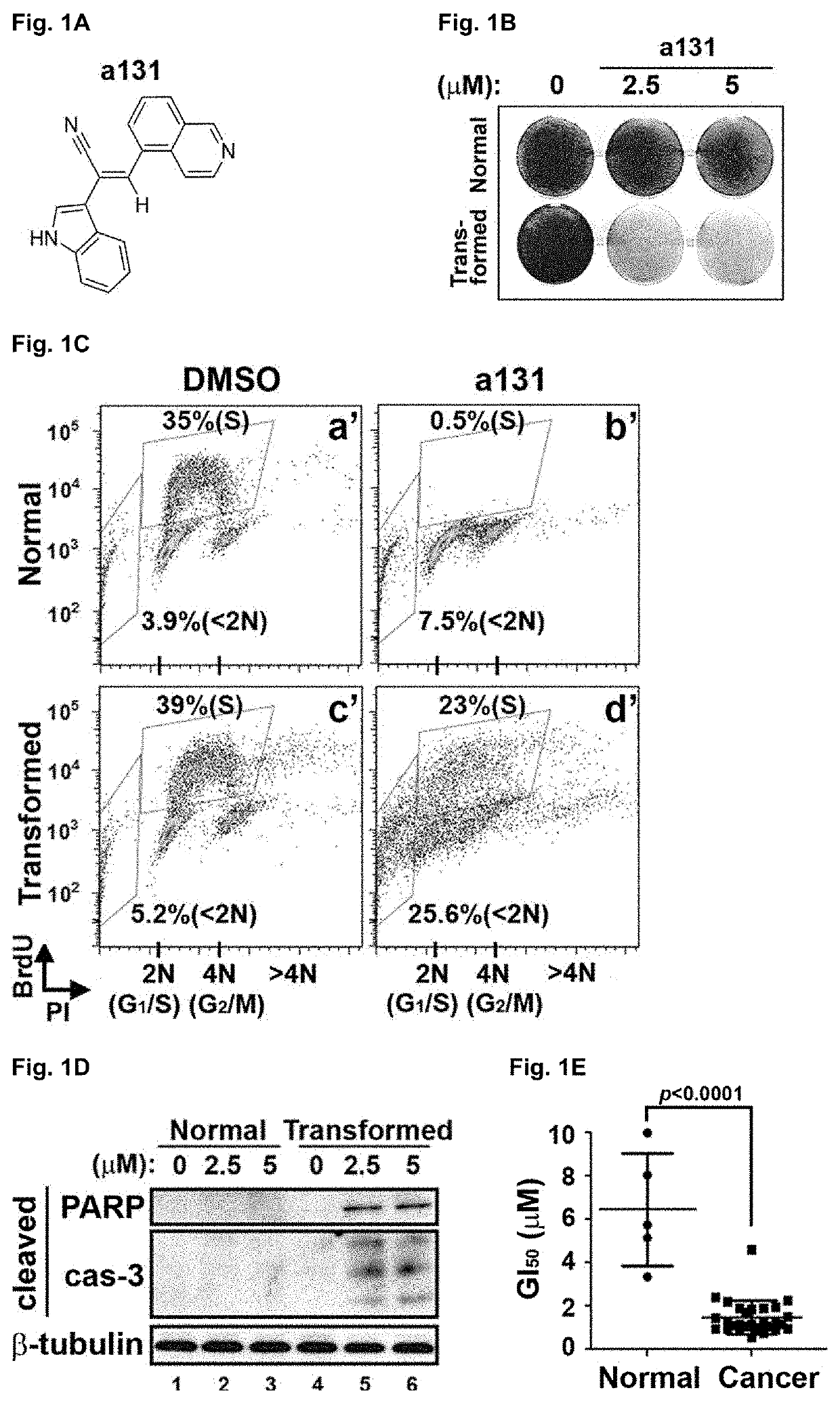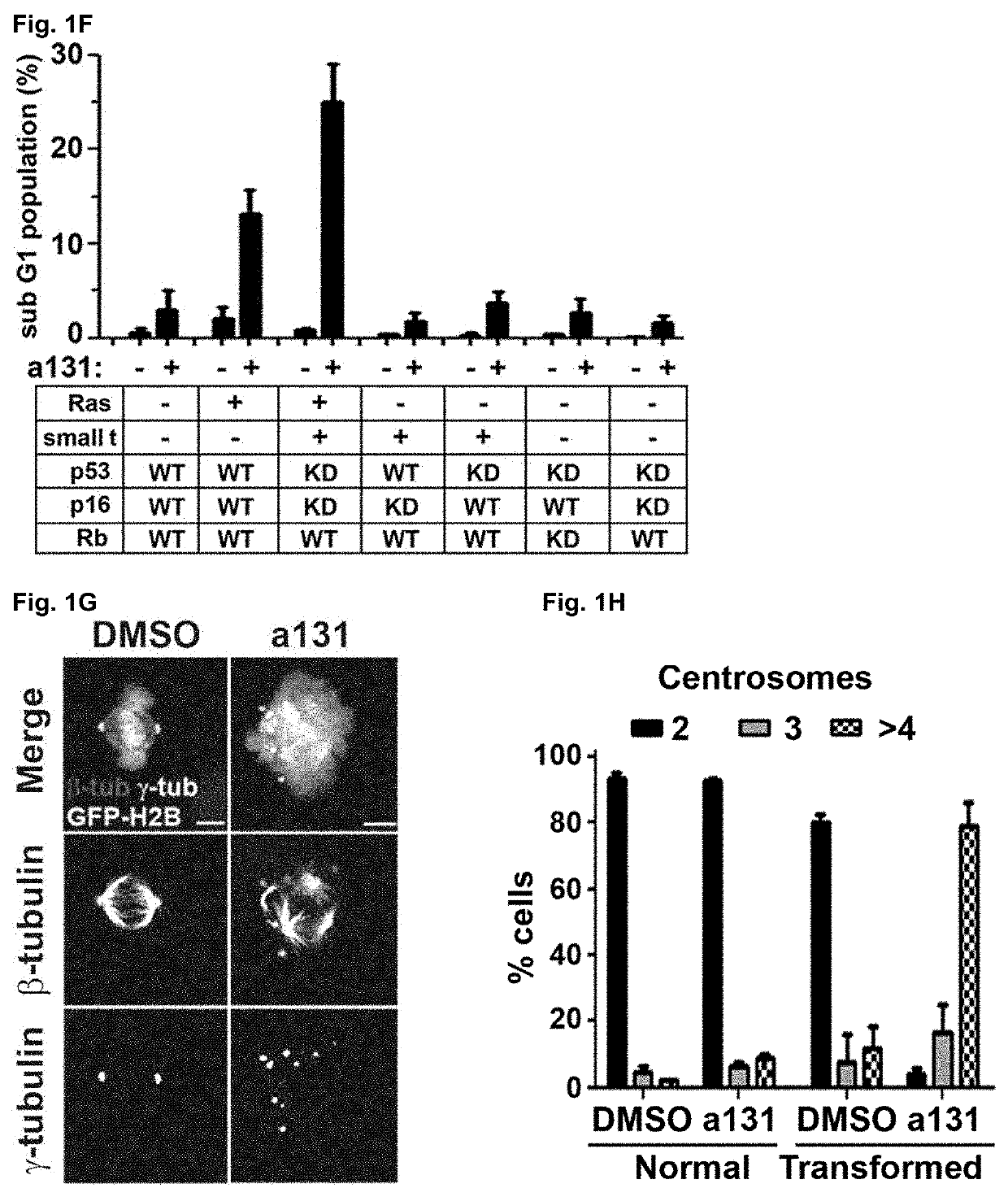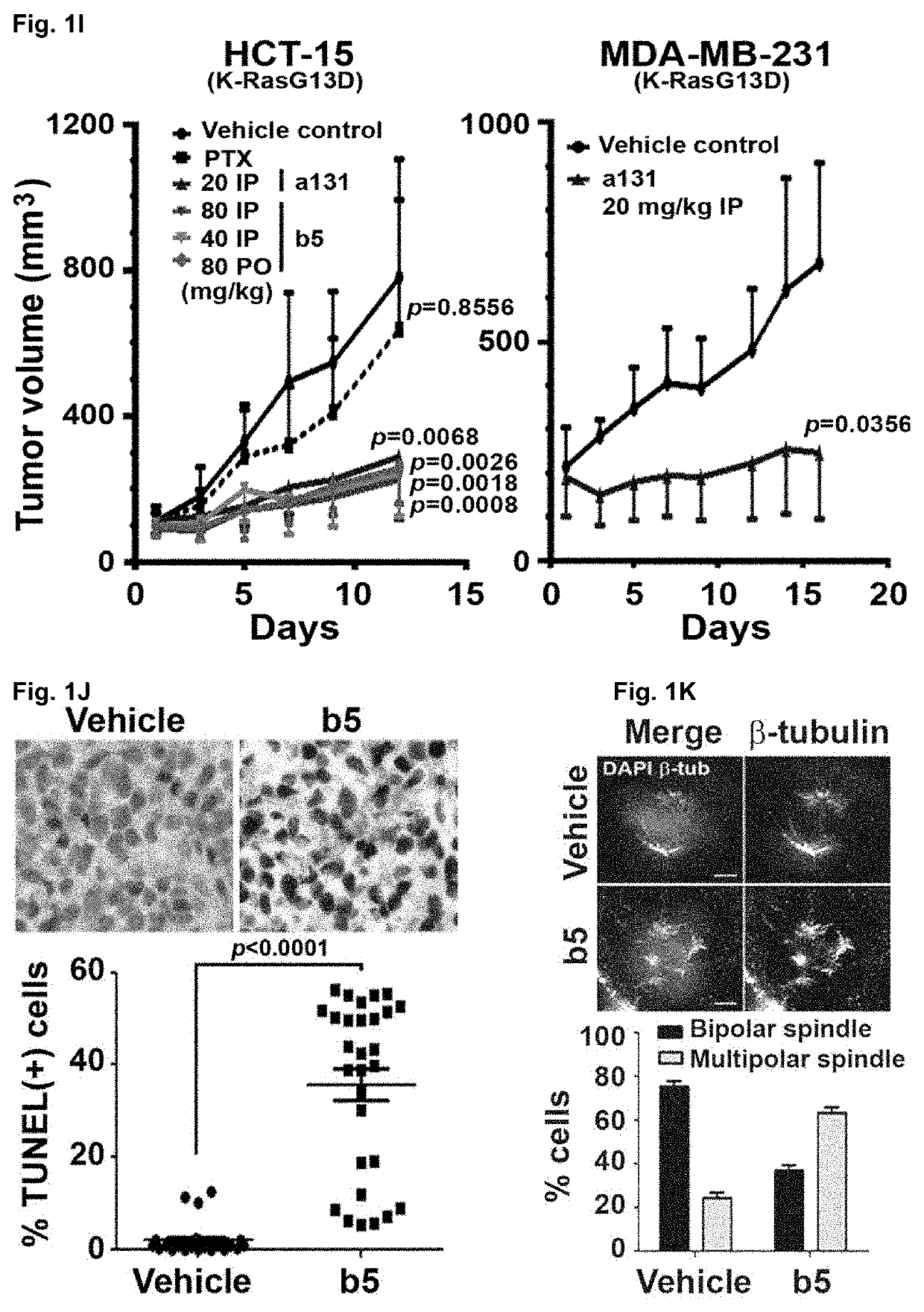Anti-cancer compounds and uses thereof
a technology of anti-cancer compounds and compounds, applied in the field of anti-cancer compounds, can solve the problems of marginal clinical success and disappointing anti-cancer activity of single-agent targeted therapies directed to block these signaling pathways
- Summary
- Abstract
- Description
- Claims
- Application Information
AI Technical Summary
Benefits of technology
Problems solved by technology
Method used
Image
Examples
example 1
[0080]Standard molecular biology techniques known in the art and not specifically described were generally followed as described in Sambrook and Russel, Molecular Cloning: A Laboratory Manual, Cold Springs Harbor Laboratory, New York (2001).
Cell Lines, Culture and Reagents
[0081]Isogenic BJ human foreskin fibroblast cell lines, including non-transformed (normal) and transformed BJ cells and all gastric cancer cell lines, were kind gifts from Dr. Mathijs Voorhoeve and Dr. Patrick Tan (Duke-NUS), respectively and tested for mycoplasma infection. The culture media for the cell lines used in this study are summarized in Table 2. All other human cancer cell lines used in this study were purchased from ATCC and cultured in accordance with ATCC's instructions. H-RasV12-ER was activated by exposing the BJ-derived fibroblasts to 4-OHT (100 nM, Sigma-Aldrich). Three different sets of siRNAs were used in this study to target PI5P4K isoform DNA sequences as follows:
pool#1,PI5P4Kα(5′-CTGCCCGATGGT...
example 2
ation of Cancer-Selective Compounds
[0099]A small-molecule screen was undertaken to investigate the specific signaling networks needed for the proliferation and survival of transformed cells using isogenic human BJ foreskin fibroblasts either immortalized with only hTert (hereafter named as normal BJ) or fully transformed with hTert, small t, shRNAs against p53 and p16 and H-RasV12-ER (estrogen receptor-fused H-Ras bearing the activating G12V mutation) (hereafter named as transformed BJ). One of the screened compounds (anti-cancer compound 131; hereafter referred to as a131) (FIG. 1A) efficiently killed transformed BJ cells but not normal counterparts (FIG. 1B; FIG. 2A). In contrast, treatment with paclitaxel (microtubule stabilizer) and nocodazole (microtubule destabilizer) showed minimal selectivity (FIG. 2A). FACS analysis of the cell cycle revealed that a131 dramatically induced cell death (4N) only in transformed BJ cells (FIG. 10, panel d′). Instead, a131 arrested normal BJ cel...
example 3
lls Undergo Reversible Cell Cycle Arrest
[0101]Consistent with a131-induced aneuploidy in transformed cells (FIG. 1C, panel d′), time-lapse analysis revealed that a131 treatment immediately induced mitotic arrest in transformed BJ cells (FIG. 3C) concomitant with massively misaligned chromosomes (FIG. 1G; FIG. 3D), which subsequently misaggregated into daughter cells often with catastrophic multipolar division, leading to cell death (not shown). In contrast, such catastrophic cell division rarely occurred in a131-treated normal BJ cells (not shown) and demonstrated significantly fewer mitotic defects than those in transformed cells (FIGS. 3C and 3E). Detailed analysis using high-resolution immunofluorescence microscopy revealed that a131 caused de-clustered centrosomes and multipolar mitotic-spindles in transformed BJ (FIGS. 1G and 1H) and other cancer cells (FIG. 3E), since most cancer cells contain supernumerary centrosomes clustered in a bipolar manner before division8. In contras...
PUM
| Property | Measurement | Unit |
|---|---|---|
| time- | aaaaa | aaaaa |
| time- | aaaaa | aaaaa |
| time- | aaaaa | aaaaa |
Abstract
Description
Claims
Application Information
 Login to View More
Login to View More - R&D
- Intellectual Property
- Life Sciences
- Materials
- Tech Scout
- Unparalleled Data Quality
- Higher Quality Content
- 60% Fewer Hallucinations
Browse by: Latest US Patents, China's latest patents, Technical Efficacy Thesaurus, Application Domain, Technology Topic, Popular Technical Reports.
© 2025 PatSnap. All rights reserved.Legal|Privacy policy|Modern Slavery Act Transparency Statement|Sitemap|About US| Contact US: help@patsnap.com



